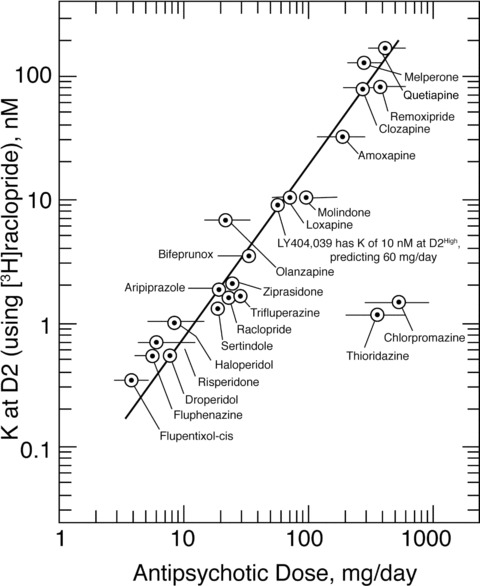Figure 1.

The clinical doses of antipsychotic medications are related to their affinities for the dopamine D2 receptor. The antipsychotic dissociation constants at D2, obtained using [3H]raclopride, are shown on the ordinate. The glutamate agonist LY404,039 [33] has an affinity for the dopamine D2High receptor with a dissociation constant of 10 nM at D2High (using [3H]domperidone, because [3H]raclopride does not readily reveal D2High receptors)[34]. This value of 10 nM predicts a clinical dose of approximately 60–100 mg/day, in general agreement with the dose of 80 mg/day used by Patil et al. [33]. Because of the very high binding (exceeding 98%) of chlorpromazine and thioridazine to plasma proteins [21], these antipsychotics require high daily doses. However, the final concentrations of all the antipsychotics (including chlorpromazine and thioridazine) in the plasma water in treated patients are almost identical to their dissociation constants [21, 23](Adapted from [23]; with permission from Scholarpedia; Reproduced from [31], with permission of Walsh Medical Media LLC.)
